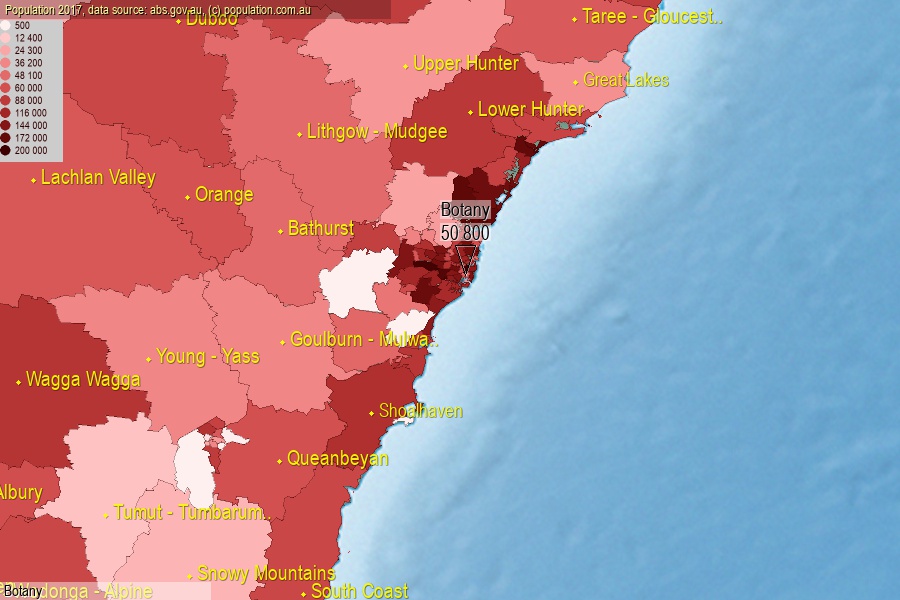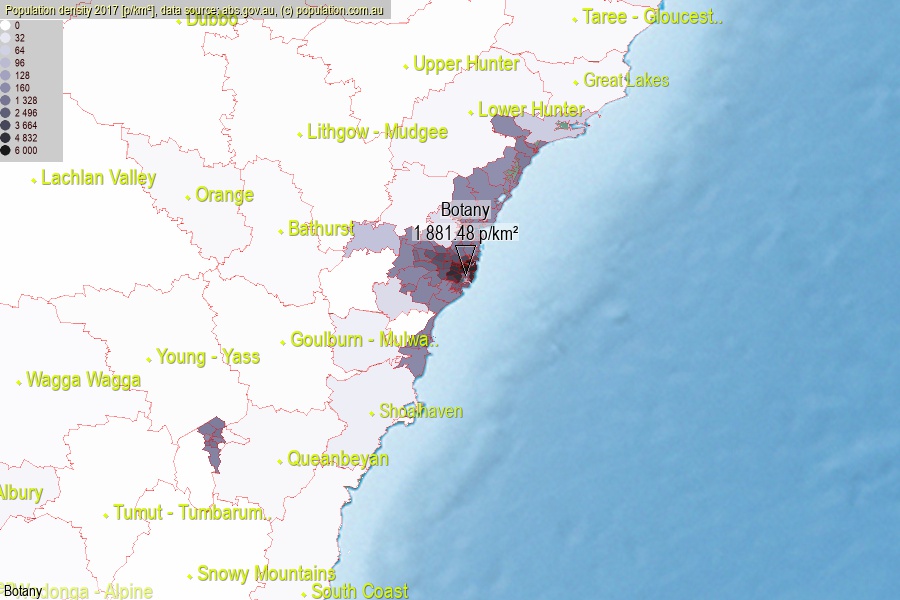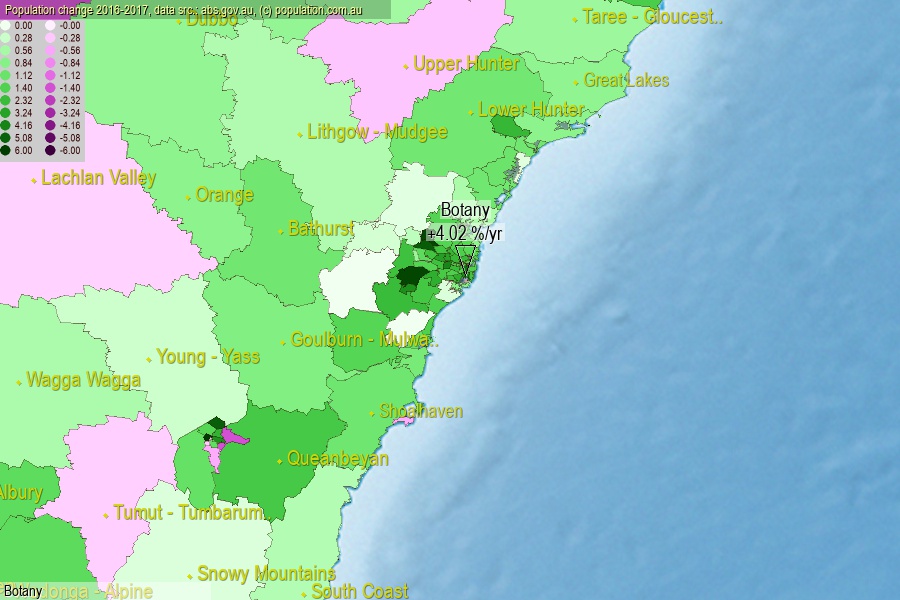 population.com.au
population.com.auLast official estimated population of Botany (as Statistical Area Level 3) was 50 800 people (on 2017-06-30)[2]. This was 0.21% of total Australian population and 0.639% of NSW population. Area of Botany is 27.00 km², in this year population density was 1 881.48 p/km² . If population growth rate would be same as in period 2016-2017 (+4.02%/yr), Botany population in 2025 would be 69 616. [0]



Click to enlarge. Botany is located in the center of the images.
Population [people], population density [p./km²] and population change [%/year] [2]
View borders » (new window) [4]
[1991-1992] -0.74 %/Y
[1992-1993] -0.78 %/Y
[1993-1994] -0.53 %/Y
[1994-1995] +0.01 %/Y
[1995-1996] +1.08 %/Y
[1996-1997] +1.50 %/Y
[1997-1998] +0.80 %/Y
[1998-1999] +0.21 %/Y
[1999-2000] +0.41 %/Y
[2000-2001] +0.54 %/Y
[2001-2002] +0.52 %/Y
[2002-2003] +0.19 %/Y
[2003-2004] -0.39 %/Y
[2004-2005] +0.36 %/Y
[2005-2006] +0.64 %/Y
[2006-2007] +1.57 %/Y
[2007-2008] +2.57 %/Y
[2008-2009] +2.58 %/Y
[2009-2010] +2.21 %/Y
[2010-2011] +1.45 %/Y
[2011-2012] +1.74 %/Y
[2012-2013] +2.23 %/Y
[2013-2014] +3.13 %/Y
[2014-2015] +3.88 %/Y
[2015-2016] +5.61 %/Y
[2016-2017] +4.02 %/Y
[0] Calculated with linear interpolation from officially estimated population
[1] Read more about SA3 and Australian Statistical Geography Standard (ASGS) on abs.gov.au
[2] Population data from Australian Bureau of Statistics (Population and density: 2017; change: 2016-2017)
[3] Digital Boundaries: Australian Statistical Geography Standard (ASGS) 2016.
[4] Border coordinates are simplifyed using Ramer-Douglas-Peucker algorithm.